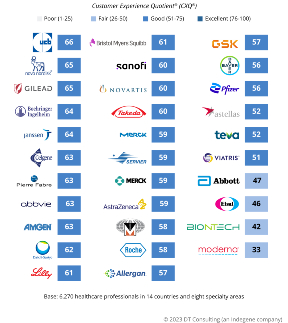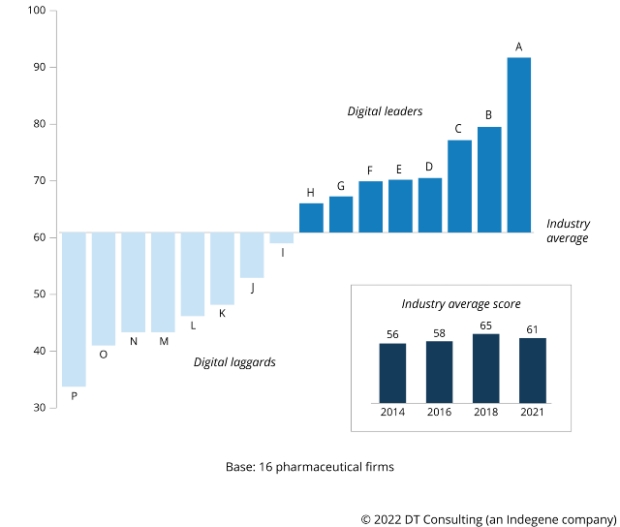The early sailors that steered their way around the Mediterranean would often do so by staying in sight of land. In this way they felt they could move most safety, but by staying within their comfort zone they also limited how far they could travel.
New approaches, like the development and refinement of celestial navigation, broadened travellers’ horizons, and then tools such as the compass – and ultimately modern ‘technology’ – allowed them to visit new and wonderous lands.
The pharmaceutical industry’s own journeys in customer engagement can similarly sometimes look as if they reside too securely within their comfort zones, limiting the success of its own engagement strategies. But, with the basics in place (see creating the right foundations for omnichannel success), new discoveries are waiting to be made by those companies that are set up to succeed with omnichannel customer engagement.
Step-by-step
The point articulated by the Chinese philosopher Lao Tzu about long journeys beginning with a single step is well made, if somewhat overused, but it has some application in pharma’s omnichannel engagement, where a step-by-step approach really needs to be taken. Without this being clearly set out initiatives can be derailed or fail to bring the required value because brand teams aren’t clear on who should do what and when they should do it.
Typically, pharma companies will already be taking many of the steps needed for successful omnichannel customer engagement, but there may not be a clear and defined framework and an aligned cross function strategy in place. Even just defining the right order in which the steps should be taken, and identifying their owners, could be that proverbial first step.
Then, where cross-functional efforts are needed, as will often be the case, taking a planned, consistent approach to omnichannel engagement is important if companies are to understand the activities that need to take place and the interdependencies that exist across different functions, including medical and legal. Within the different parts of the business there should be clear roles and responsibilities that can be tied back to the desired business outcomes.
As a company’s omnichannel plans and ambitions cruise from global to local, sharing the rationale for the work that needs to be done will help local teams understand what it is that underpins the global strategy and encourage them onboard.
However many steps there will be in a company’s journey it will need to create a map for the state it wants to reach and a framework for how it will deliver it. A key element of this will be ensuring that you have the right operating model in terms of the capabilities, skills and resources required.
The technology stack
Eventually sailors would have access to their own full technology stack, with an array of sextants, radar and other tools at their disposal. In omnichannel journeys pharma’s own technology stack will need to be assessed, during an early stage of its roadmap development, and decisions taken as to whether or not it’s fit-for-purpose.
To be able to make this call companies should start with their overall vision and then look at the technology required to support it. In this way an evaluation of the overall operating model can include not only technology, but also the people and processes that are vital operate it effectively.
As part of setting the technology vision, you need to consider how platforms will be acquired, onboarded and supported on an ongoing basis. If, for example, an automated next best action system is needed, there is much that companies need to know, from what functionality will be required to who will own the technology. But this knowledge will not arrive of its own accord – it needs to be driven by a vision of what needs to be achieved.
Pharma’s omnichannel technology stack can then be overlaid on the roadmap to ensure that at all stages, the required technology support has either been put in place already or will be implemented.
Customer-centricity understanding
Customer-centricity continues to hold on to its status as one of the industry’s preeminent buzzword, but it continues to be very important.
Companies must develop a real understanding of how they are going to be customer-centric and not allow strategy and customer-centricity to be decoupled from each other. The idea of customer-centricity must have a value proposition for the end user. So, how does the product deliver for the healthcare professional (HCP) in terms of the longer life expectancy, fewer relapses or more convenient dosing that they can then offer to their patients.
This then needs to be brought into plans for omnichannel engagement by assessing how they will enhance customer centricity in terms of delivering what HCPs want (and how and when they want it).
Measurement
Alongside the steps that need to be taken for omnichannel customer engagement, there will be an ongoing need to measure whether or not they have been successfully taken. Such measurement will need to be planned for in terms of what outcomes will be desired and what data will be required to assess them.
Companies need to know what they’re measuring, why they’re measuring it and how these numbers will demonstrate meaningful engagement and behavioural change – too many times campaigns collect data but it’s not actionable, with metrics that are divorced from meaning. Anticipating, before launch, what the post-campaign metrics need to look like will help companies to reach their targets.
However, high budget activities that generate low levels of engagement are an easy trap to fall into. If, for example, you’re making a Hollywood movie for an audience of five people you must be able to justify the campaign expense in terms of the expected value of the behaviour change. Additionally, and perhaps more seriously, mismatches with internal metrics have to be avoided, particularly when they result in compensation schemes that do nothing to support strategic omnichannel engagement campaigns.
Any analytics set-up should provide a high level of visibility: allowing you to trace the campaign journey, see the customer moving down the campaign funnel and see the touch points that will be present. But without the numbers to back up a campaign, the justification for activities just won’t be there, moreover companies will lack any basis for ongoing optimisation or agile marketing.
Ongoing customer focus
As companies chart, and follow, their own particular courses towards omnichannel success they must maintain a rigid focus on the customer throughout the engagement journey.
To do this they must hold tight to the strategy’s red thread, keeping an eye on it at all times – if the strategy is obscured it’s all too easy to veer wildly of course, so keep the strategic imperative top of mind throughout the process and beware of unplanned content additions that don’t deliver on the strategic objectives.
This work doesn’t happen on its own and each of the above recommendations is likely be potentially challenging for different companies for different reasons, while also needing a healthy dose of change management to ensure they work. As part of this management will need to bring their reports with them on this voyage, explaining why things need to be done and what the strategic relevance of them is.
If people are not recognised for the work involved, or they’re not incentivised to do it, individuals can lose their motivation and companies can go off course. So, for pharma companies that want to make a success of their omnichannel customer engagement, a scalable planning framework will keep them on the right path.
• This article first appeared in the January 2024 issue of PME (Pharmaceutical Market Europe)
Main image by Denise Jans on Unsplash






